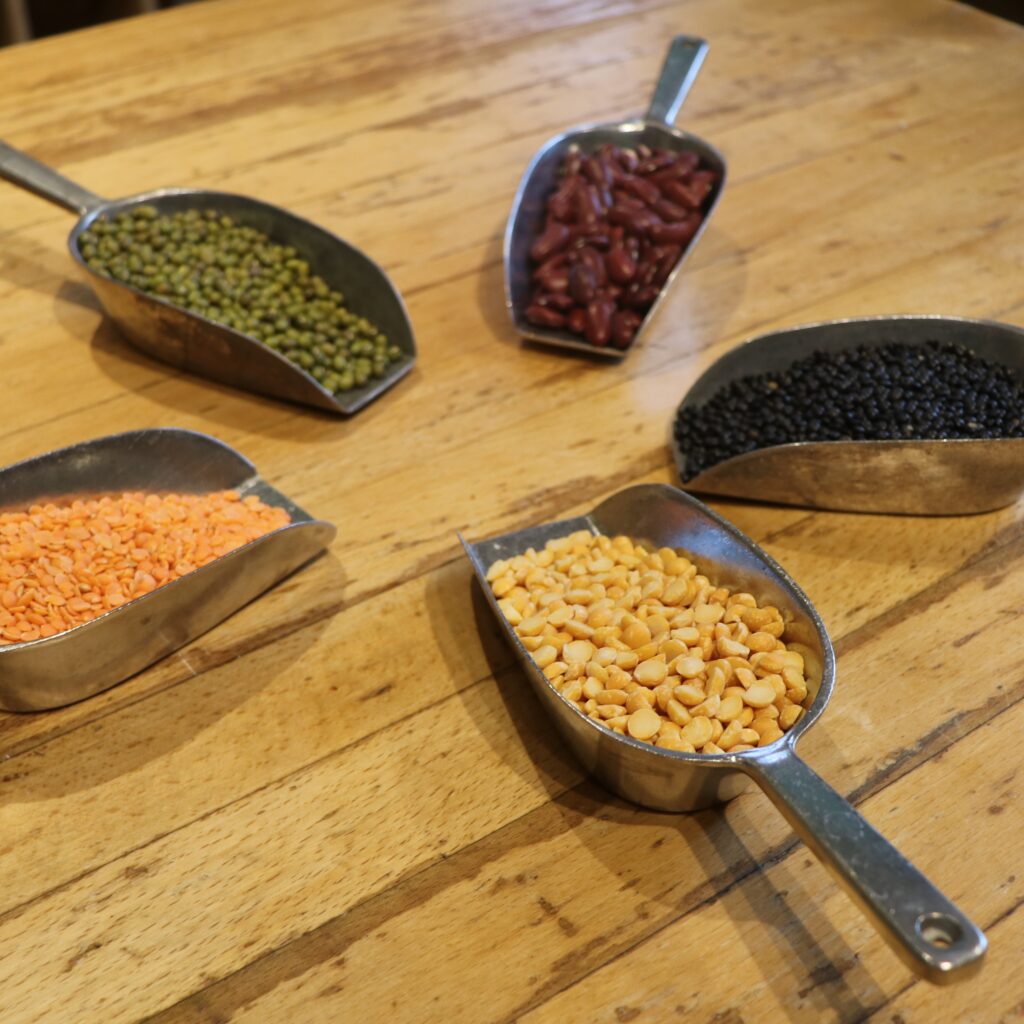Five top tips for cooking pulses from scratch
Cooking dried pulses from scratch isn’t fast and furious – if you need hasty meals in a rush, tinned or jarred pulses are a great alternative option to have on hand. Opting for dried pulses can, on the other hand, be a mindful, economical and rewarding way of cooking. Gram for gram, the dried beans will work out cheaper (although there is the energy cost of cooking to be factored in), and if cooked well, they will have a much better texture than anything from a tin. The feel and sound of dried pulses makes them a lovely ingredient to work with, and with a bit of organisation, the cooking process can be hugely satisfying.
The variety of sizes that you find in different pulses, as well as factors such as age and storage, and final use, will all influence the cooking process. This makes it hard to come up with generalised rules, and there is no ‘one size fits all’. That being said, if you are new to cooking with dried pulses and don’t know where to begin, here are a few starting suggestions which we hope will help keep things easy and simple.

1) Cook pulses separately first
If you are planning to add the pulses to a chilli or stew, cook them separately first. This is particularly true for larger pulses, which can take over an hour to cook. This will be too long for other veggie ingredients in the dish, which may collapse and turn to mush. Cooking the pulses most or all of the way separately should mean your final dish has all the right textures.
This point is less important for lentils, which cook quicker and are more suitable for simply chucking in the pan along with your other ingredients.
2) Plan your time
As per the point above, cooking larger peas and beans can take a long time. Not the thing for when you’ve got in late from work and want dinner on the table quickly. They are, however, the perfect thing to prep in advance. They require little attention apart from the occasional check to see if the water needs topping up. If you know you want to be cleaning in the kitchen this weekend, that is a great time to have a pan of kidney beans simmering away gently in the background.
Cooking a large batch will use less energy than cooking multiple smaller ones and will set you up for the week ahead. You can store cooked pulses can keep in the fridge for 3-5 days, or in the freezer until you need them.
3) Soak anything larger than a split pea
The small size of lentils and split peas means that these don’t need soaking. You will still want to give them a thorough rinse to remove any dirt before cooking.
For larger pulses, like beans and peas, it is worth giving them a good soak to reduce the cooking time. Either cover with water overnight ready to cook in the morning or put them on before you head out for work in preparation for the evening. Draining the soaking water and adding fresh water for cooking will also help remove the compounds that can lead to flatulence.
4) Keep it simple – don’t add too much to the cooking water
Additions like salt or acids can affect the cooking time and final texture. Keeping it simple with plain water will avoid this, and you can season to taste once the beans are cooked.
Some recipes (particularly if cooking chickpeas for hummus) will recommend adding bicarb, either during the soaking or cooking stage. This can speed up the process and leave you with a softer final product (better for blending into dips). However, it’s worth bearing in mind that this will destroy some of the thiamine, making the protein in the pulses harder to absorb.
5) Cook at a gentle simmer
You want to start your pulses off by boiling rapidly for 5-10 mins. This step is particularly important for kidney beans, because they have high levels of lectins which can be toxic if consumed. Boiling rapidly neutralises the lectins, making the beans safe to eat.
Following the initial hard boil, reduce the temperature and leave them at a gentle simmer. For whole lentils, you can check if they are cooked from 20 minutes onwards. For larger pulses, it is worth checking regularly from 30-40 minutes into the cooking time.

